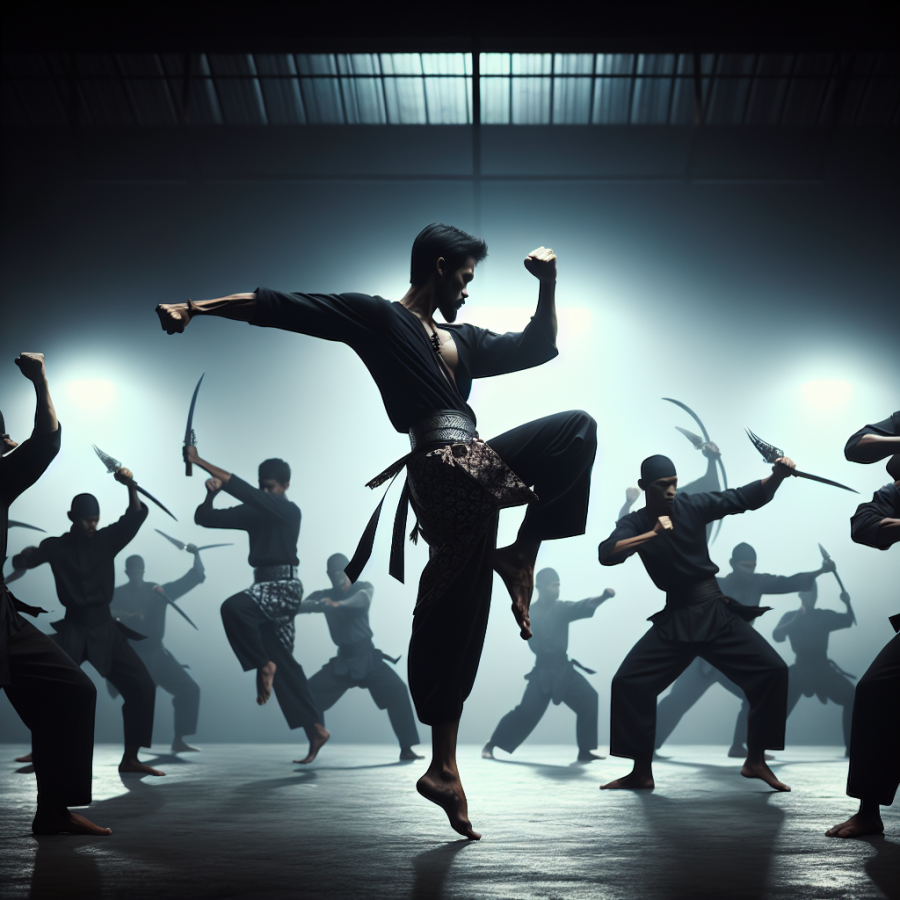The Techniques and Training Regimen of Indonesian Pencak Silat Masters
Pencak Silat, a traditional martial art form hailing from the Indonesian archipelago, is known for its combination of artful dance movements and powerful combat techniques. The masters or 'gurus' of Pencak Silat undergo rigorous training and follow time-honored techniques to achieve their esteemed mastery. These practices are designed to enhance physical strength, spiritual depth, and martial prowess.
One of the core elements of their training regimen is flexibility and body conditioning. This involves a wide array of stretching exercises to ensure that the practitioner can perform the wide, flowing movements with both grace and agility. Gurus emphasize the importance of suppleness in the training as it aids in evasion techniques as well as in delivering strikes from unusual angles.
Another pillar of Pencak Silat training is the mastery of breathing techniques. Practitioners are taught to control their breath to increase physical endurance and to focus their minds, aligning their mental and physical state. This is particularly crucial during the practice of 'tenaga dalam' or inner power exercises, which is believed to amplify striking power and resilience.
Balance and footwork constitute a vital part of a Silat practitioner's training routine. The art requires excellent balance as many of its techniques involve complex movements, including jumps and turns. Masters will often be seen practicing on uneven surfaces or at various heights to challenge and improve their balance and spatial awareness.
Hand-to-hand combat techniques are at the very core of Pencak Silat, and gurus go to great lengths to refine their skills. They engage in constant practice of strikes, locks, and throws, with an emphasis on the practical application of these techniques. This includes learning to anticipate and counter attacks, often through drills or 'randori', where practitioners spar in controlled environments.
The use of weapons is another aspect wherein Indonesian Pencak Silat Masters demonstrate their remarkable ability. Their training includes the use of various traditional weapons such as the keris (a type of dagger), the kujang (a unique blade weapon), and the sarong (a multifunctional garment often used in defense). Mastery in weapon handling is achieved through disciplined practice, which includes solo forms, partner drills, and sparring.
Mental fortitude is honed through meditation and other mind-strengthening exercises. Masters understand the significance of mental discipline in combat situations.
Read also:
Exploring the Depths: The Thrill of Underwater Hockey
Exploring the Origins and Philosophy of Pencak Silat
Pencak Silat is a martial art deeply rooted in the cultural fabric of Indonesia, where physical prowess meets spiritual development. The term 'Pencak Silat' itself encompasses a wide array of styles and schools, each with its own distinctive approach to self-defense, physical conditioning, and philosophical depth.
The origins of Pencak Silat are often shrouded in mystery and legend. Tracing back its inception proves to be challenging, as it predates written history in the region. It is generally believed that Silat evolved among the tribal communities of the Malay Archipelago as a method of self-defense against wild animals and inter-tribal warfare. Over time, these techniques were refined and systematized into what we now recognize as Pencak Silat.
What makes Pencak Silat stand out from many other martial arts is its profound philosophical core. It is entwined with the spiritual beliefs and societal values of Indonesia. The philosophy behind Pencak Silat promotes the idea of a harmonious balance between the physical and the spiritual, the inner self and the external world. Practitioners are taught respect, humility, and a sense of moral justice, which guides not only their martial technique but also their daily lives.
One of the critical aspects of Pencak Silat's philosophy is the concept of 'Merantau,' which refers to a journey of self-discovery and personal growth. Practitioners, known as 'Pesilat,' often travel, seeking knowledge and testing their skills, a practice that has contributed to the diffusion and evolution of the art across Southeast Asia.
Pencak Silat also has a significant artistic component, which is exhibited through intricate movements and elaborate costumes during performances. These performances often tell stories and represent battles between good and evil, reflecting the art's philosophical principles of justice and moral conduct.
The combat techniques of Pencak Silat are diverse and can include strikes, throws, joint manipulation, and the use of weapons. The grounding philosophy of Silat is that of adaptive fluidity; practitioners must be capable of adjusting to any situation and using their environment to their advantage. This idea parallels life in that flexibility and resourcefulness are key to overcoming challenges.
One of the hallmarks of Pencak Silat is its 'Kembangan' or 'flower dance,' which serves both as a spiritual exercise and a technical display.




